
Welcome to the Club of Amsterdam Journal.
Thought-leaders in the advertising industry will share their vision on the future of advertising. What is in the near future going to change in the strategy of the large and influential advertising agencies? Will there be a future for the ‘old media’ advertising (paper, TV, radio, billboards) considering the influence of Internet and other digital channels? The financial crisis reduced the size of many larger agencies and let them focus on their core business, creativity. Will that be a permanent trend? How is that going to influence the cooperation with smaller companies and freelance professionals in the creative industry? What will be the new, innovating concepts that will drive the advertising future? What is the role of the consumer going to be?
In case you would like to hear more and also share your thoughts, visit our next event about the future of Advertising
– October 29!
Tom Lambert
– a dear friend – passed away on the Seventh of September , 2009.
Tom has been a member of our Advisory Board.
Felix Bopp, editor-in-chief
Engineering the new Content Ecosystem
 Gerd Leonhard: Media Futurist, Author, Speaker, Entrepreneur Interview with FreedomLab Amsterdam This is a video from a conversation I had with Arjan Postma and Joergen van der Sloot over at FreedomLab in Amsterdam, in July 2009. We touched on a variety of topics: the economics of the media industry and why they don’t really work anymore, why and how the Internet is challenging most of our assumptions, extracting value vs adding value, egosystem vs ecosystem, Sellaband, crowd-sourcing and the future of media companies, the hit-economy and the longtail… and much more. Enjoy. |
Next Event

| the future of Advertising Thursday, October 29, 2009 Location: Pakhuis de Zwijger, Expo Zaal, Piet Heinkade 179, first floor, 1019 HC Amsterdam with      |
Behavioral Advertising – Monetization versus Privacy
| Technology and TRUSTe co-hosted a panel discussion exploring behavioral advertising and navigating the policy risks. The panel was moderated by Declan McCullagh, Chief Political Correspondent & Senior Writer for CNET. Speakers: Alissa Cooper, Chief Computer Scientist, CDT, Colin O’Malley, VP of Strategic Business, TRUSTe and Anne Toth, VP of Policy and Head of Privacy, Yahoo! Technology and TRUSTe co-hosted a panel discussion exploring behavioral advertising and navigating the policy risks. The panel was moderated by Declan McCullagh, Chief Political Correspondent & Senior Writer for CNET. Speakers: Alissa Cooper, Chief Computer Scientist, CDT, Colin O’Malley, VP of Strategic Business, TRUSTe and Anne Toth, VP of Policy and Head of Privacy, Yahoo! |
Club of Amsterdam blog

News about the Future

Value of Advertising Global Survey
By WFA and The Nielsen Company.
The study reveals that the vast majority of consumers see advertising as playing a key role in the economy: 80% of the world’s consumers believe that advertising helps create jobs. 72% say advertising contributes to economic growth. 68% believe it helps to reduce prices by stimulating competition.
A clear majority of consumers across all markets also understand the importance of advertising and sponsorship as a critical source of funding for sports, the arts and the media.
The survey reveals interesting discrepancies between attitudes by region. Europeans are more skeptical about the informational and entertainment value of advertising. For example, 50% of Europeans agreed that advertising is a useful source of information, versus 81% in Latin America, 75% in Asia-Pacific and 71% in North America.
Overall, the results show broadly consistent, largely positive consumer views about the economic benefits of advertising. Europeans are the most hesitant, in clear contrast to the emerging markets across Asia-Pacific, Latin America, the Middle East and Africa.

World’s largest offshore wind farm opens in Denmark
200,000 Danish households can expect to get their electricity supply from the offshore wind farm Horns Rev II officially opening today. The park, situated in the North Sea 30 kilometers from the shore, will produce 2.2 percent of the kingdom’s total power.
”This park confirms Denmark’s position as world champion of wind power. Having 20 percent of our total power supply covered by wind mills we are ahead by far. But we are not going to stop here. Over the coming four years we will triple our capacity for offshore wind power,” says Minister for Climate and Energy, Connie Hedegaard.
Horns Rev II is expected to produce 800 gigawatt/h annually – equivalent to the consumption in 200,000 Danish households. The size of the park has prompted it to become the world’s first offshore wind farm equipped with a platform where maintenance personnel can spend the night.
Solar Roadways
The Solar Roadways will collect solar energy to power businesses and homes via structurally-engineered solar panels that are driven upon, to be placed in parking lots and roadways in lieu of petroleum-based asphalt surfaces.
The Solar Road Panels will contain embedded LEDs which “paint” the road lines from beneath to provide safer nighttime driving, as well as to give up to the minute instructions (via the road) to drivers (i.e. “detour ahead”). The road will be able to sense wildlife on the road and can warn drivers to “slow down”. There will also be embedded heating elements in the surface to prevent snow and ice buildup, providing for safer winter driving. This feature packed system will become an intelligent highway that will double as a secure, intelligent, decentralized, self-healing power grid which will enable a gradual weaning from fossil fuels.
Replacing asphalt roads and parking lots with Solar Roadway panels will be a major step toward halting climate change. Fully electric vehicles will be able to recharge along the roadway and in parking lots, finally making electric cars practical for long trips.
It is estimated that is will take roughly five billion (a stimulus package in itself) 12′ by 12′ Solar Road Panels to cover the asphalt surfaces in the U.S. alone, allowing us to produce three times more power than we’ve ever used as a nation – almost enough to power the entire world.
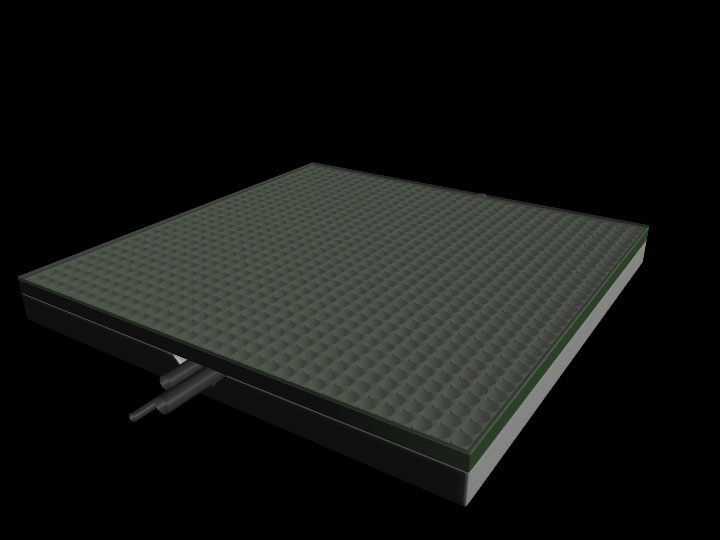
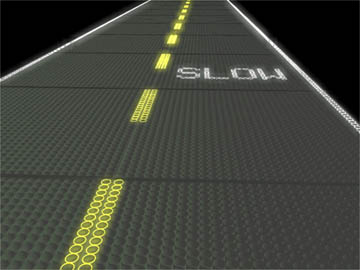
Images and animation by Dan Walden
Recommended Book

| Free: The Future of a Radical Price by Chris Anderson My new book, FREE: The Future of a Radical Price, is about a counterintuitive notion: that you can make money by giving things away. Actually, it’s pretty surprising that is still controversial, given that it’s the foundation of the long-standing broadcast media model (radio and television are “free to air”, supported by advertising) to say nothing of the billions in profit made every year by my hosts here at Google. But Free is perhaps the most misunderstood four-letter word beginning with “F” in the English language, which is why I wrote a book about it. The debate the book has sparked is evidence of how polarizing and disruptive the concept still is. |
Underground City
Sietch Nevada
In Frank Herbert’s famous 1965 novel Dune, he describes a planet that has undergone nearly complete desertification. Dune has been called the “first planetary ecology novel” and forecasts a dystopian world without water. The few remaining inhabitants have secluded themselves from their harsh environment in what could be called subterranean oasises. Far from idyllic, these havens, known as sietch, are essentially underground water storage banks. Water is wealth in this alternate reality. It is preciously conserved, rationed with strict authority, and secretly hidden and protected.
Although this science fiction novel sounded alien in 1965, the concept of a water-poor world is quickly becoming a reality, especially in the American Southwest. Lured by cheap land and the promise of endless water via the powerful Colorado River, millions have made this area their home. However, the Colorado River has been desiccated by both heavy agricultural use and global warming to the point that it now ends in an intermittent trickle in Baja California. Towns that once relied on the river for water have increasingly begun to create underground water banks for use in emergency drought conditions. However, as droughts are becoming more frequent and severe, these water banks will become more than simply emergency precautions.
Sietch Nevada projects waterbanking as the fundamental factor in future urban infrastructure in the American Southwest. Sietch Nevada is an urban prototype that makes the storage, use, and collection of water essential to the form and performance of urban life. Inverting the stereotypical Southwest urban patterns of dispersed programs open to the sky, the Sietch is a dense, underground community. A network of storage canals is covered with undulating residential and commercial structures. These canals connect the city with vast aquifers deep underground and provide transportation as well as agricultural irrigation. The caverns brim with dense, urban life: an underground Venice. Cellular in form, these structures constitute a new neighborhood typology that mediates between the subterranean urban network and the surface level activities of water harvesting, energy generation, and urban agriculture and aquaculture. However, the Sietch is also a bunker-like fortress preparing for the inevitable wars over water in the region.
Credit: Andrew Kudless (Design), Nenad Katic (Visualization), Tan Nguyen, Pia-Jacqlyn Malinis, Jafe Meltesen-Lee, Ben (Model)
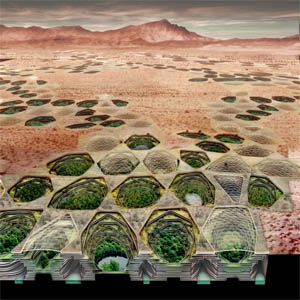
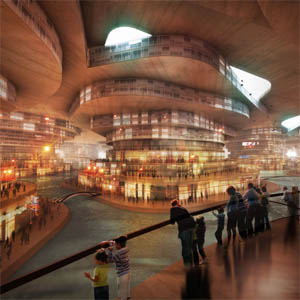
In Memory of Tom Lambert
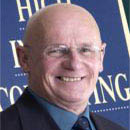

Tom Lambert – a dear friend – passed away on the Seventh of September , 2009.
From Tom’s bio:
” Known to the American business press as the “world’s friendliest guru” Professor Tom Lambert is an international author, broadcaster, consultant, trainer, conference speaker, businessman and business journalist. In Europe, America, S.E. Asia and Southern Africa his books and seminars have led him to be known to the quality business press as “the consultant’s consultant”.
Tom is Founder and global Chairman of the International Centre for Consulting Excellence (ICfCE) a professional body launched by leading academics and businesspeople in the UK, USA and Australia with links to S.E. Asia, the Middle East and the EU.”
Tom as speaker at the Summit for the Future:
Many countries have traditionally sent some of their best and brightest young people to the USA and Europe to complete their management education. Shackled by curricula largely designed to meet local needs these graduates have returned with models, tools and techniques that can be close to impossible to apply within the culture. The International Centre for Consulting Excellence is operating Think Tanks designed to combine the best of Eastern and Western understanding in a way that is sensitive to local cultures and needs. Understanding of a culture demands knowledge of a country’s history, religion, philosophy, belief systems and present needs that can only come from being a national of that country – or does it?
Tom – Thank You!
Agenda

| Season Program 2009 / 2010 | ||
| October 29 18:30-21:15 | the future of Advertising Location: De Zwijger, Expo Zaal, 1st floor, Piet Heinkade 179, 1019 HC Amsterdam  | |
| November 19 18:30-21:15 | the future of Waste Location: WTC, Metropolitan Boardroom of Amsterdam In Business, D tower, 12th floor, Strawinskylaan 1, 1077 XW Amsterdam  | |
| February 11 18:30-21:15 | the future of Biosensing Location: De Waag, Amsterdam | |
| March 25 18:30-21:15 | the future of Sports Location: Amsterdam | |
| April 29 18:30-21:15 | the future of Music Location: Amsterdam | |
| June 3 18:30-21:15 | the future of CERN Location: Amsterdam | |

Leave a Reply